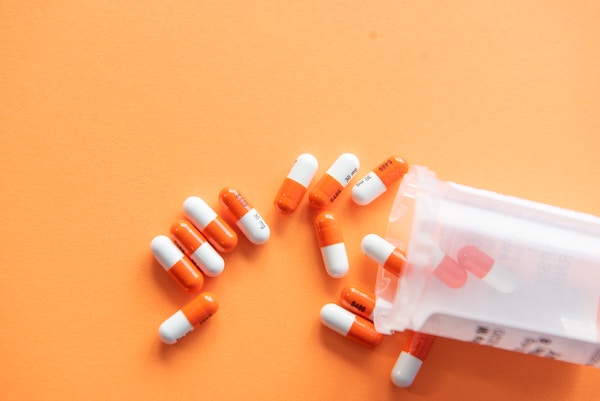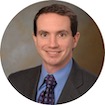Rethinking the pharmaceutical industry

Rethinking the pharmaceutical industry
October 31, 2023 | By Sevin Yeltekin
In Part 1 of this Q&A, Senior Lecturer Sam Ogie gave us an overview of the lead drivers of health spending in the U.S. and shared some of the ways Simon is preparing healthcare professionals to lead in a changing environment.
Below, he takes us behind the scenes of the pharmaceutical industry, explaining the complex forces that shape drug pricing and development.
SY: What is a common myth surrounding drug spending in the U.S.?
SO: As we discussed previously, the two primary drivers of health spending in the U.S. are hospitals and physicians, which between 2010-2018 accounted for 35% and 20% of the growth in spending on health care consumption, respectively. Drug spending only accounted for 8% of that growth, which contradicts the public perception that it is a large and rising percentage of spending.
It is true that Americans spend more on drugs than their counterparts in Canada, Europe, and elsewhere. In the EU, single-payer health systems operate as monopsonists, negotiating a lower price than what is possible in the U.S. This disparity certainly challenges our fundamental concept of fairness. The pharmaceutical industry is only able to sell drugs in international markets because of the profits it accumulates in the U.S., and we don’t like the idea that we are subsidizing drug prices for the rest of the world. But that is the price we pay for innovation. The U.S. covers approximately 70% of R&D for the pharmaceutical industry. Typically, the government awards grants for bench research, and everything beyond that is privately funded. If the U.S. were to adopt a system of price controls in an attempt to match the spending levels of other countries, it is not clear where the bulk of R&D funding will originate. In this case, we should expect a lower level of overall investment and fewer drugs developed as a result.
SY: When it comes to drug spending, do we get enough value from our collective investment?
SO: Another common myth people have about drug spending is that we don’t get a lot of value from all the money we put in, and nothing could be further from the truth. Between 1990 and 2010, increased access to new drugs accounted for nearly 75% of the increase in life expectancy in developed countries. Things like access to clean water and high-quality neonatal healthcare accounted for a rapid jump in life expectancy prior to those years, but the incremental gains we have achieved since then are mostly attributable to drugs. While the U.S. spends more on drugs than other developed countries, drugs are available sooner here, leading to more lives saved. For example, Herceptin, a breakthrough breast cancer drug, was available two years earlier in the U.S. than elsewhere.
SY: What should we understand about the economics of drug development?
SO: One of the fundamental concepts we teach in finance classes at Simon is that a riskier investment requires a higher return. Drug development is one of the riskiest businesses out there, and someone has to compensate for that risk. In the pharma industry, it takes an average of $2.6 billion and 15 years to develop a drug, secure FDA approval, and get it onto the market. Pharma companies must screen hundreds or thousands of compounds to identify something worth taking to clinical trials. Then, the drug must make it through Phase 1, 2, and 3 clinical trials, whether it is intended for use by 2,000 or 100 million people. Phase 3 is by far the most expensive step of this process, requiring the recruitment of thousands of people to confirm a meaningful statistical response, not just the absence of harm. Ultimately, a recent estimate concluded that eight out of nine investigational drugs fail, either because they don’t perform well in clinical trials or because a competitor beats them to market. While the $2.6 billion price tag to develop the average drug may seem overly steep, it reflects the fact that pharmaceutical companies must bankroll all their failures, capitalizing only on the rare success. In other words, we have to look at the money spent on drugs that didn’t work to understand how much was truly spent on drugs that did work.
SY: How does the patent process play into the risk equation?
SO: The U.S. operates on a first-to-file patent system. If Company A discovers a drug before Company B but Company B files first, Company B gets the patent. This creates a strong incentive for companies to file early in the drug development process. A patent technically lasts for 20 years but by the time the drug goes through the clinical trial process, there may only be a handful of years left. This system creates additional risk for a drug developer, who is then under tremendous pressure to recoup their investment in a shortened window of time after a drug hits the market. One of the legal provisions that mitigates this pressure, in some cases, is the awarding of market exclusivity (the sole right to sell a drug in the U.S.) for five years—so, for example, if a patent is about to expire in three years, the company gets an extra two years to bank early profits.
At some point, the U.S. government also recognized that the pressure to earn large profits right after a drug arrives on the market would disincentivize the development of drugs for conditions that only affect hundreds or thousands of people. In response, it developed an orphan drug designation, which reimburses companies for a significant percentage of investment costs and awards an automatic seven years of market exclusivity. We soon saw an explosion in growth of the development of drugs under this designation. While the benefits for those who suffer from rarer diseases are clear, critics of the designation argue that it goes too far, incentivizing drug companies to overly focus on developing orphan drugs to the exclusion of more broadly useful drugs.
SY: What did Operation Warp Speed reveal about the FDA approval process?
SO: For many people, Operation Warp Speed was somewhat disconcerting because there was a vaccine with novel technology that was approved following an extremely accelerated process. As a society, we can argue back and forth about whether that was a good thing, but the endeavor raised questions about why there is such a long, expensive approval timeline for other drugs and vaccines. The reality is that the FDA’s requirement for drugs in Phase 3 to demonstrate efficacy as well as safety is what consumes an enormous amount of resources. There is a growing chorus of voices arguing that the FDA should remove its efficacy requirement, simply enforcing safety standards and leaving questions of efficacy to patients and their physicians.
Personally, I find the efficacy conversation valuable because I would like to see more drugs brought to market. I would like to see the FDA approval process become faster and more efficient, with more pathways to approval. But I don’t expect much in the way of positive change. The FDA has a tremendous amount of power, and no one likes to give up power. Removing the requirement to prove efficacy could potentially eliminate thousands of jobs.
SY: How can we better detect abusive practices when it comes to drug pricing?
SO: It all comes down to the level of innovation involved. On one end of the spectrum, we have people like Martin Shkreli (“Pharma Bro”) who manipulated the regulatory system to mark up a drug for HIV patients that had been on the market for many years. The steps he took were technically legal but clearly unethical. There was no innovation involved. On the other end of the spectrum are drugs like Harvoni and Solvaldi, both of which cure Hepatitis C. Prior drugs available for Hepatitis C had roughly a 60% cure rate, leaving the remaining 40% patients in need of a liver transplant—which also required them to be on immunosuppressants the rest of their life—or dying while waiting for a transplant. Harvoni and Solvadi came along and improved the cure rate to between 90 and 98%. These drugs cost $100,000, which some have claimed is abusive, but they are actually a bargain compared to the alternative, ie a transplant. Some argue that these drugs should still cost less than they do, assuming that there is a considerable price markup from the cost of development. This is where we must return to the concept that profits from drugs like these are what counterbalance failure.
SY: How are you preparing Simon students to make an impact in the pharma industry?
SO: I teach a class called “Evolving Medical Markets” that is largely case based. When students land a seat at the table in the industry and have to decide whether to take a drug to market, there is no clear next step or right answer. The cases we study require Simon students to draw knowledge from all their MBA classes, from finance to marketing to economics, to consider these decisions through different lenses. In this way, my class is a sort of capstone for students entering the pharmaceutical industry. The executives and researchers they meet in this class help them understand the challenges and opportunities that lie ahead.

Samuel Ogie is a Senior Lecturer and the Faculty Director of Simon's Medical Management Program.
Follow the Dean’s Corner blog for more expert commentary on timely topics in business, economics, policy, and management education. To view other blogs in this series, visit the Dean's Corner Main Page.
Add new comment